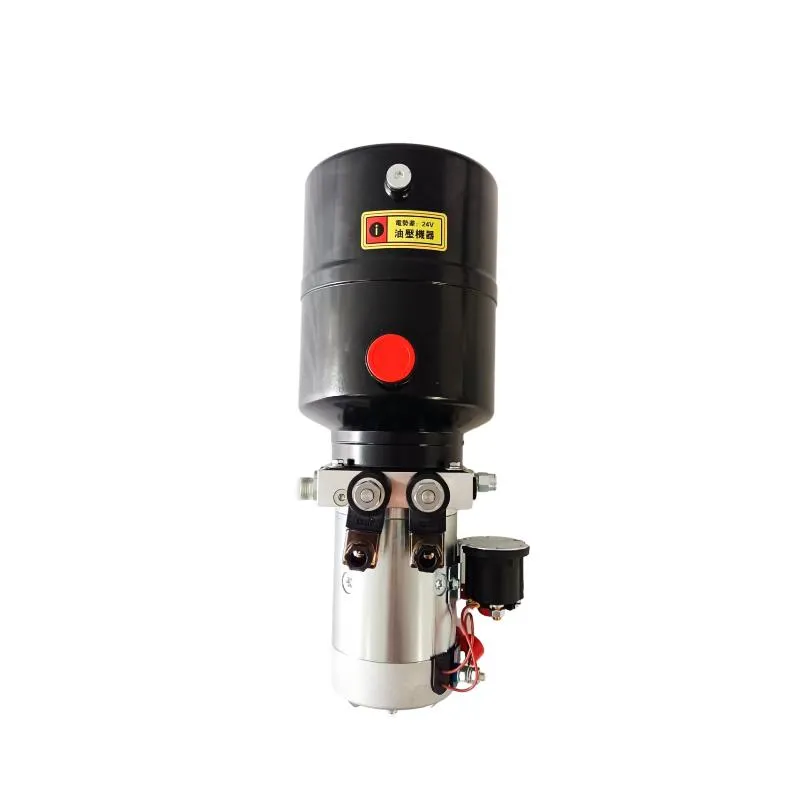Oct . 21, 2024 22:55 Back to list
Single Acting Hydraulic Cylinder Features and Applications for Efficient Power Generation
Understanding Single Acting Hydraulic Cylinders A Comprehensive Overview
Single acting hydraulic cylinders are essential components widely used in various industrial applications due to their simplicity and efficiency. Unlike double acting cylinders, which can push and pull using hydraulic fluid on both sides of the piston, single acting cylinders operate using hydraulic pressure on only one side. This design makes them particularly suited for applications where the return stroke can be achieved through gravity, springs, or mechanical assistance.
Basic Operation
The operation of a single acting hydraulic cylinder revolves around a simple mechanism. When hydraulic fluid is pumped into the cylinder, it exerts pressure on the piston, causing it to move in one direction, usually extending the cylinder. Once the input pressure is released, the piston returns to its original position either due to gravity or an external force. This straightforward mechanism of operation allows for fewer components, thus reducing the likelihood of malfunction and the complexity of maintenance.
Applications
Single acting hydraulic cylinders find extensive use in various applications across industries
1. Construction Equipment In construction, these cylinders are often used in equipment like excavators and forklifts where lifting is required but the return stroke can leverage gravity.
2. Manufacturing and Assembly Lines In manufacturing processes, single acting cylinders can be utilized for tasks such as pressing components together or moving items along a conveyor system.
3. Agricultural Machinery Farm equipment frequently incorporates single acting cylinders to operate plows, tillers, and other implements that require extension but can rely on mechanical means for retraction.
5. Automotive Applications In the automotive industry, single acting cylinders can be seen in brake systems, tailgates, and lifts where the action only needs force in one direction.
single acting hydraulic cylinder product

Advantages
The advantages of single acting hydraulic cylinders include
- Simplicity With fewer components compared to double acting types, these cylinders are easier to install, operate, and maintain.
- Cost-Effectiveness They are generally less expensive due to their simpler design and lower manufacturing costs.
- Compact Size Single acting cylinders tend to be lighter and more compact, making them ideal for applications where space is limited.
Limitations
Despite their numerous benefits, single acting hydraulic cylinders have some limitations
- Limited Stroke Length They can only provide force in one direction, which might not be suitable for applications that require complex movements or multi-directional operation.
- Dependence on External Forces The return stroke relies on gravity, springs, or external forces, which may not always be desirable depending on the application.
Conclusion
In conclusion, single acting hydraulic cylinders are a vital part of many industries, known for their reliability and efficiency in applications requiring unidirectional force. Their straightforward design not only simplifies usage and maintenance but also enhances cost-effectiveness, making them a popular choice in various sectors from construction to manufacturing. As technology continues to advance, the versatility and functionality of hydraulic systems, including single acting cylinders, will likely expand, paving the way for even more innovative applications in the future. Understanding their operation and application can help engineers and operators make informed decisions that leverage their advantages while mitigating any drawbacks effectively.
-
Fork Lift Power Units - Hebei Shenghan | Efficiency, Reliability
NewsJul.13,2025
-
1.5-Ton Turbocharged Cylinder-Hebei Shenghan|Hydraulic Solution,Energy Efficiency
NewsJul.13,2025
-
Auto Hoist Power Units-Hebei Shenghan|Efficiency&Industrial Lifting
NewsJul.13,2025
-
Double Acting Power Units-Hebei Shenghan|Hydraulic Solutions,Industrial Efficiency
NewsJul.13,2025
-
1.5 Ton Lifting Cylinder 70/82-40-290-535 - High-Performance Hydraulic Solution | Hebei Shenghan
NewsJul.13,2025
-
Fork Lift Power Units - Hebei Shenghan | Efficiency&Reliability
NewsJul.13,2025
